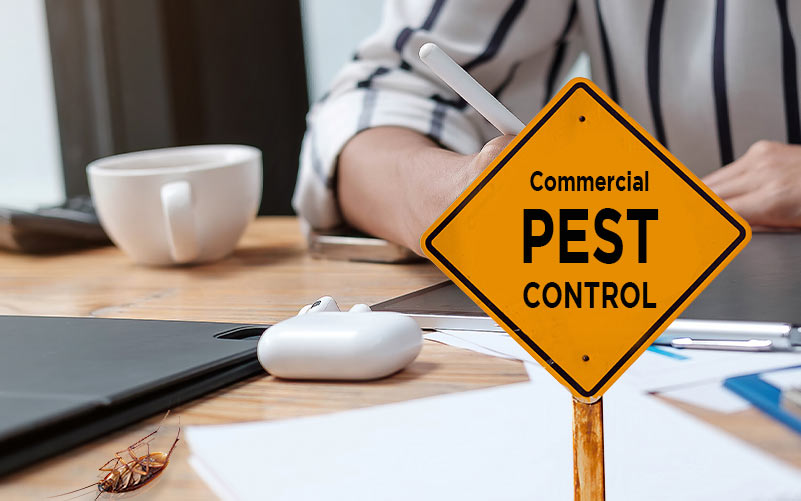A1 Bed Bug Exterminator Charlotte - Efficient and Affordable Services
A1 Bed Bug Exterminator Charlotte - Efficient and Affordable Services
Blog Article
Bed Bug Therapy Breakdown: Comparing Chemical Vs. Non-Chemical Solutions
In the realm of bug control, particularly when taking care of the relentless issue of bed bugs, the selection in between chemical and non-chemical therapy solutions can be a critical one. Both techniques use unique benefits and downsides, affecting aspects such as efficiency, safety and security considerations, and total expense. By analyzing the nuanced details of each method, a clearer understanding of which path to pursue in dealing with a bed pest problem can be attained.
Effectiveness of Chemical Treatments
Chemical treatments for bed bug problems have been commonly acknowledged for their rapid and powerful efficiency in eliminating these insects. When taking into consideration the performance of chemical therapies, it is important to understand that they can supply a quick and comprehensive service to a bed bug problem. Expert pest control specialists typically depend on pesticides to target bed insects at different stages of their life process, consisting of eggs, nymphs, and adults. These chemicals commonly work by disrupting the bed insects' nerves, bring about paralysis and ultimate fatality.
Additionally, chemical treatments have the benefit of offering residual results, implying that they can remain to eliminate bed insects also after the preliminary application. This recurring action is particularly beneficial in combating any kind of potential re-infestations. Furthermore, the quick action of chemical treatments can bring relief to people facing serious bed bug problems, allowing them to restore control of their space quickly.
Safety Issues With Chemical Solutions
One essential aspect that calls for careful consideration when making use of chemical solutions for bed insect treatment is making sure the safety and security of owners and the atmosphere. Direct exposure to certain chemicals used in bed pest treatments can lead to respiratory concerns, skin inflammation, or other adverse responses, particularly in people with pre-existing problems or sensitivities.
In addition, the ecological impact of chemical options is one more substantial factor to consider. Some pesticides made use of in bed bug therapies may be hazardous to advantageous bugs, wild animals, and ecological communities if they leach into the dirt or water systems. It is important to use chemical therapies judiciously, following security guidelines, and taking into consideration much less toxic alternatives to mitigate these dangers and make sure the reliable and secure administration of bed bug infestations.
Benefits of Non-Chemical Techniques
Thinking about see post the possible security problems and environmental influence connected with chemical solutions for bed insect treatment, exploring non-chemical techniques offers a promising choice with numerous distinctive advantages. Non-chemical treatments are environmentally friendly, as they do not add to air or water air pollution, making them a lasting selection for bug control.
In addition, non-chemical solutions can be reliable in targeting bed bugs, including hard-to-reach areas where chemical treatments may not pass through - A1 pest control services charlotte. Methods such as warm treatment, vacuuming, heavy steam cleaning, and mattress encasements provide extensive elimination without the usage of hazardous chemicals.
Limitations of Non-Chemical Treatments

In addition, non-chemical treatments commonly call for numerous applications to achieve successful removal. This can be time-consuming and may not always assure complete elimination of all bed bugs and their eggs, specifically in hard-to-reach or hidden areas.
Moreover, the success of non-chemical therapies heavily depends on correct implementation and thoroughness, directory which can be testing for try this site people without professional proficiency. Insufficient application of non-chemical methods might result in incomplete obliteration, leading to persistent invasions and the requirement for additional therapies.
For that reason, while non-chemical therapies have their advantages, it is necessary to recognize these limitations and consider them when figuring out one of the most reliable strategy for handling bed bug infestations.
Cost Contrast: Chemical Vs. Non-Chemical Options
Given the constraints connected with non-chemical treatments, a crucial element to assess in the context of bed pest administration is the cost contrast between chemical and non-chemical alternatives. In comparison, non-chemical treatments like heat treatment or vapor can be a lot more pricey, with prices varying from $1,000 to $6,000 for a whole home. While the first expense of chemical treatments may seem reduced, multiple treatments may be called for to completely eliminate the invasion, potentially raising the overall expense.
Conclusion

Considering the prospective security worries and ecological influence linked with chemical remedies for bed pest treatment, discovering non-chemical methods presents an encouraging alternative with several distinct benefits.Offered the limitations connected with non-chemical therapies, a vital aspect to examine in the context of bed insect monitoring is the price contrast between chemical and non-chemical alternatives. In contrast, non-chemical treatments like heat treatment or vapor can be much more costly, with prices varying from $1,000 to $6,000 for an entire home. While the preliminary expense of chemical therapies may seem reduced, numerous therapies might be called for to totally remove the problem, potentially enhancing the overall expense.In verdict, when contrasting chemical and non-chemical bed pest therapy alternatives, it is essential to take into consideration effectiveness, safety and security, benefits, restrictions, and price.
Report this page